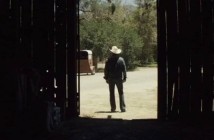Joaquim Pedro de Andrade: an anthropophagic dialogue with his modernist namesakes
Joaquim Pedro de Andrade (1932-1988) is certainly one of the key filmmakers of Brazilian filmmaking of the 1960s and early 1970s. But due in part to his early passing, he has a brief albeit highly diverse filmography consisting of five feature films, a feature-length documentary, and eight short films. Despite their diversity of subjects, many scholars and fans alike have noted that what connects all of his films on a thematic level is Brazil. In other words, be it fiction or documentary, de Andrade continually tempered/selected his narratives and subjects in relation to his country’s shifting, differential, and especially contradictory sociocultural/political aspects, perhaps most prominently in his 1967 short documentary on the construction/completion of the new Brazilian capital Brasilia in the early 1960s, Brasília: Contradicões de uma cidade nova/Brasília: Contradictions of a new city.
Though de Andrade studied physics at university, he received a scholarship from the Rockefeller Foundation to study film in England and the United States, following the making of his 1959 debut films, O mestre de Apipucos/The Master of Apipucos (1959) and O poeta do castelo/The Poet of the Castle, portraits of family friends/popular writers Gilberto Freyre and Manoel Bandeira, respectively. His first fiction work was another short film, Couro de gato/Cat Skin (1962), which came to be included in the omnibus film that is often considered the arrival of Cinema novo, Cinco vezes favela/Five Times Favela (1962). The short is neorealist-inspired, with its location shooting in Rio, the favela, and the backdrop of Carnaval. It tells the simple story of a group of boys from the favela who steals cats in order to sell them and is pursued by city dwellers and a cop, and in the process addresses class difference head-on, in a commanding and defiant way, and all without dialogue.
From film to film, de Andrade developed a formal approach that betrayed the influence of Brazilian modernism, the 1920s radical, avant-garde movement in arts and politics that simultaneously broke with established styles and syntax, highlighted folkloric forms and sources, and reevaluated nationalism. In particular, de Andrade drew great inspiration from the triumvirate of poets-writers with whom he shared a last name: Mário de Andrade (1893-1945), Oswald de Andrade (1890-1954), and Carlos Drummond de Andrade (1902-1987) Mário and Oswald were the co-founders of Brazilian modernism as members of the avant-garde Grupo dos cinco (‘Group of five’) and thus constituted the ‘first’ generation of modernists, while Carlos embraced Brazilian modernism and applied it specifically to poetry beginning in the 1930s to help constitute the ‘second’ generation. By actively taking from Brazilian modernism’s precepts, de Andrade injected into his work the conflict of the traditional and the modern, and also of the modern and postmodern.
De Andrade’s most famous film, which overshadows the rest of his work, is Macunaíma (1969), based on Mário de Andrade’s 1928 ethnographic, picaresque novel of the same name. The novel recounts the adventures of the titular character, born in the depths of the Amazon jungle, through modern-day Brazil with its panoply of cultures. It was the result of Mário’s research on Brazil’s indigenous languages and cultures, and folkloric stories to arrive at a more localised and pluralistic nationalism. De Andrade’s film adaptation is perhaps more irreverent and fantastical in its representation of Macunaíma’s journey and Brazil’s blend of white European, black African, and indigenous cultures, in part because it was made during a turbulent time of a second military coup, student protests, labour strikes, and the dictatorship’s clampdown on dissidents. Unlike the novel, in the film Macunaíma is born as an adult (Grande Otelo), becomes white thanks to water gushing out from the earth, and was actually modeled on the real-life persona of Oswald de Andrade.
De Andrade’s dialogue with Brazilian modernism was not confined to Macunaíma. His first feature-length fictional work was O padre e a moça/The Priest and the Girl (1966), based on a poem by Carlos Drummond de Andrade of the same title. As the title implies, the film tells of an impossible relationship, with the great Helena Ignez as the young woman for whom a new priest in a town in Minas Gerais develops amorous feelings. De Andrade manages to bring together passion and restraint in a poetic and notable way. (Unsurprisingly, it received rather vociferous reception from Catholic and conservative quarters.) Appropriately enough, de Andrade’s last film, O homem do Pau-Brasil/The Brazilwood Man (1982) was an attempt to put to the screen the assorted, electric life and work of Oswald de Andrade. The narrative revolves principally around Oswald’s relationships with several women in different periods of his life. But its most deliciously unexpected detail is de Andrade’s nod to one of Oswald’s principal ideas, that of anthropophagy or cannibalism, in his representation of Oswald. Oswald is presented in two forms—a man and a (cross-dressing) woman, played by actors Flávio Galvão and Ítala Nandi—with the female half ultimately devouring the male half.




